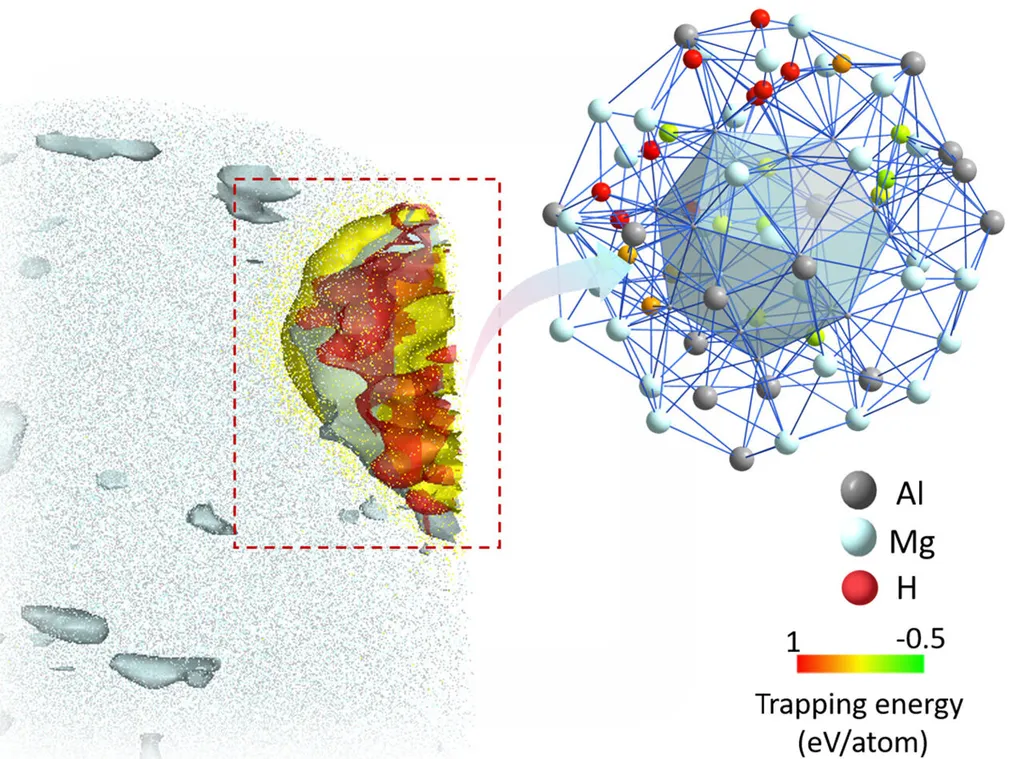In the world of advanced materials, understanding the intricate dance of atoms during solidification can lead to groundbreaking improvements in industrial applications. A recent study published in *Results in Materials* (translated from the Latin as “Results in Materials”) has shed new light on the relationship between primary aluminum grains and a specific intermetallic phase in the widely used 6082 wrought aluminum alloy. This research, led by M.H. Khan from the WMG (Warwick Manufacturing Group) at the University of Warwick, could have significant implications for the energy sector and beyond.
Aluminum alloys are the backbone of many industries, from automotive to aerospace, due to their lightweight and high strength-to-weight ratio. The 6082 alloy, in particular, is prized for its excellent corrosion resistance and weldability. However, the presence of intermetallic phases, such as α–Al15(Fe,Mn)3Si2, can significantly influence the mechanical properties of the alloy. Understanding the orientation relationship between the primary aluminum grains and these intermetallic phases is crucial for optimizing the alloy’s performance.
Using transmission electron microscopy (TEM), Khan and his team confirmed specific orientation relationships between the primary aluminum and the α–Al15(Fe,Mn)3Si2 intermetallic phase. “We found that the (111) plane of primary aluminum aligns with the (202) plane of the intermetallic phase, and the (200) plane of primary aluminum aligns with the (02‾ 2) plane of the intermetallic phase,” Khan explained. This alignment suggests a coupled growth mechanism during the solidification process, where the formation of primary aluminum influences the evolution of the intermetallic phase.
The study highlights the critical role of growth kinetics and the matching of close-packed planes in the orientation-dependent growth of these phases. “The matching of close-packed planes, such as (110) and (113), plays a pivotal role in the orientation relationship,” Khan added. This understanding could lead to more controlled and optimized solidification processes, ultimately enhancing the mechanical properties of the alloy.
For the energy sector, these findings are particularly relevant. Aluminum alloys are widely used in the construction of power transmission lines, renewable energy infrastructure, and other critical components. Improving the mechanical properties of these alloys can lead to more efficient and reliable energy systems. “By understanding and controlling the solidification process, we can tailor the properties of aluminum alloys to meet the specific demands of the energy sector,” Khan noted.
The research also opens up new avenues for further investigation. Future studies could explore the impact of different cooling rates and alloying elements on the orientation relationship between primary aluminum and intermetallic phases. Additionally, the findings could be extended to other aluminum alloys, potentially leading to a broader range of applications.
In conclusion, this study by Khan and his team at the University of Warwick represents a significant step forward in the understanding of aluminum alloy solidification. By unraveling the complex interplay between primary aluminum grains and intermetallic phases, the research paves the way for improved materials and enhanced performance in critical industries, including the energy sector. As the world continues to demand more efficient and sustainable materials, such advancements are not just academic exercises but practical steps towards a better future.

